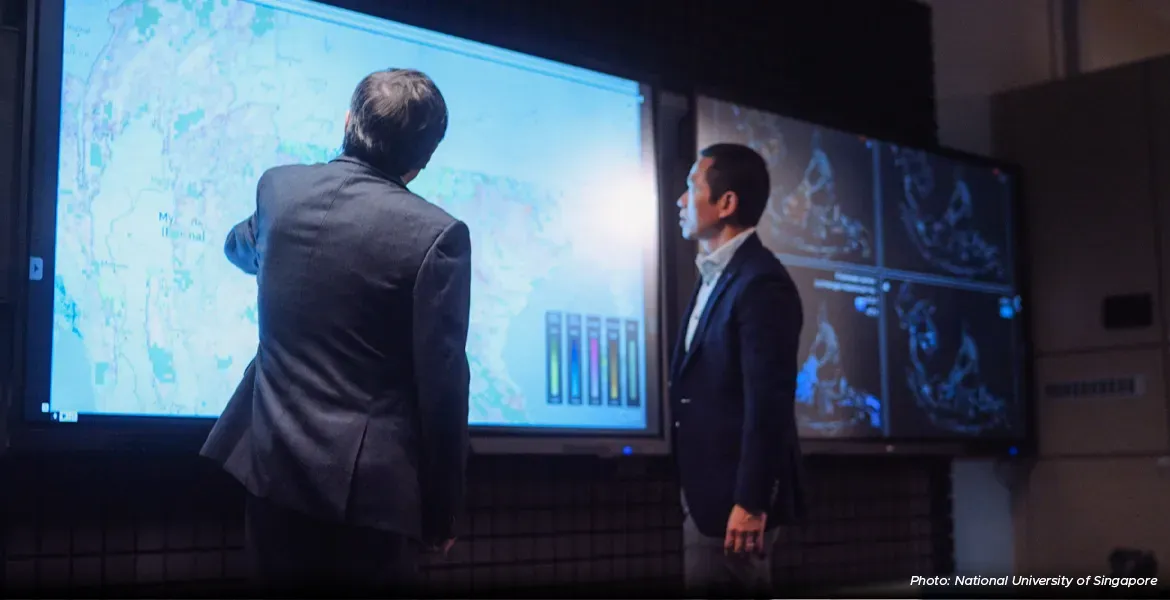The NUS Decision Theatre, a new scenario-modelling facility to accelerate cooperation on nature-based carbon projects across Southeast Asia, was launched on November 30.
As there are a number of uncertainties surrounding government policies and the future market conditions for nature-based carbon credits, the S$1 million facility aims to help policymakers, investors and carbon project developers to source these credits in an optimal way, or to establish new projects.
The NUS Decision Theatre, which was developed by the NUS Centre for Nature-based Climate Solutions (CNCS) and ST Engineering’s satellite data and geospatial analytics business, ST Engineering Geo-Insights, was launched at the Singapore pavilion at the United Nations COP28 climate conference in Dubai that kicked off on Nov 30.
Professor Koh Lian Pin, the Associate Vice President and Chief Sustainability Scientist at the National University of Singapore (NUS), and the director of CNCS, said: “Having a platform to model the different scenarios will help to... enhance the effectiveness and efficiency of cross-border carbon credit trading, while also creating new economic opportunities.”
He was speaking at a panel discussion titled “Beyond Borders: Harnessing Greater Mitigation Opportunities Through International Cooperation”, which showcased two prototypes that will help governments envision how countries can increase their mitigation potential – or their ability to reduce global greenhouse gas emissions – through international collaboration. The other prototype is the Global Mitigation Potential Atlas.
Users can tap into the NUS Decision Theatre at the university’s Kent Ridge campus, or remotely, where they will have access to satellite images of carbon-rich forested areas across Southeast Asia, and the amount of carbon dioxide (CO2) stored in each area. Those who would like to view the facility can reach out to NUS to book a demo session.
They can then adjust various parameters – such as the type of carbon credit, participating countries, their expected carbon price, and the project duration – to perform on-the-fly calculations of economic potential and co-benefits of establishing a carbon project at a specific site.
Nature-based carbon projects typically involve the generation of carbon credits through forest conservation or restoration activities, which either prevent CO2 from entering the atmosphere or help to whittle away the planet-warming gas.
However, one uncertainty in the establishment of nature-based carbon projects lies in national policies that would affect the quantity of carbon credits in each country that is available for international trading, as countries may want to count their forest protection or restoration efforts towards their own climate targets.
It has also been undecided if carbon credits from the protection of threatened forests can be traded between countries for them to count towards national climate targets under the Paris Agreement, due to concerns over environmental integrity.
For instance, the Singapore Government has listed several eligibility criteria for companies to use international carbon credits to offset up to 5 per cent of their carbon tax, when it increases from S$5 per tonne currently to S$25 per tonne from 2024.
Under its criteria, very specific types of forest conservation projects will be permitted for use, to ensure that they are of high environmental integrity.







